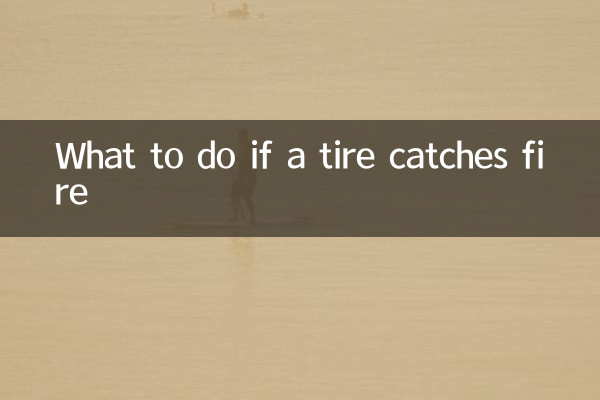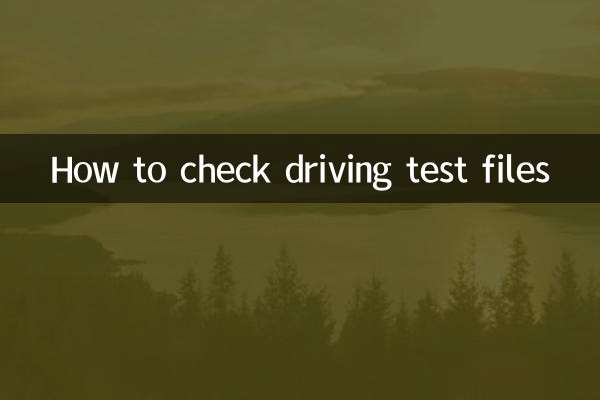What to do if a tire catches fire
Recently, traffic safety issues have occupied an important position among the hot topics on the Internet, especially the frequent incidents of vehicle tire fires, which have attracted widespread attention. This article will combine the hot content of the past 10 days to introduce in detail how to deal with tire fires, and provide structured data for quick reference.
1. Common causes of tire fires

According to recent hot events and expert analysis, the main causes of tire fires include:
| reason | Proportion | Typical cases |
|---|---|---|
| Overheating caused by prolonged braking | 45% | A truck's tires caught fire while going downhill |
| Insufficient tire pressure | 30% | Private car burst into flames while driving at high speed |
| Tires are aging or severely worn | 15% | Taxi catches fire due to aging tires |
| Ignition from external fire source | 10% | Tires catch fire when vehicle passes flammable material |
2. Emergency treatment steps for tire fires
When a tire catches fire, proper handling is crucial. Here are emergency steps recommended by experts:
| step | Operating Instructions | Things to note |
|---|---|---|
| 1. Stop immediately | Park your vehicle in a safe area, away from crowds and flammable materials | Do not continue driving to prevent the fire from spreading |
| 2. Cut off the power | Turn off the engine and remove the key | Prevent short circuits from causing bigger fires |
| 3. Use a fire extinguisher | Spray fire extinguishing agent at the base of the tire | Avoid spraying directly onto the top of the flame |
| 4. Call the police for help | Dial 119 fire alarm number | Describe vehicle location and fire conditions |
| 5. Evacuate people | Keep all passengers away from the burning vehicle | Keep a safe distance of at least 50 meters |
3. Measures to prevent tire fires
According to recent hot discussions, key measures to prevent tire fires include:
| Precautions | Specific practices | Execution frequency |
|---|---|---|
| Check tires regularly | Check tire pressure, wear and cracks | at least once a month |
| avoid overloading | Drive strictly according to the vehicle load limit | Inspection before every shipment |
| Use brakes correctly | Use low gear to assist braking when going downhill | Especially on mountain roads |
| Equipped with fire extinguisher | Choose a fire extinguisher that fits the size of your vehicle | Check every 6 months |
| Replace aging tires promptly | Replace tires according to their service life | Generally 3-5 years or 50,000-80,000 kilometers |
4. Analysis of recent popular tire fire incidents
According to hot content in the past 10 days, the following tire fire incidents have triggered widespread discussion:
| date | event | Cause analysis | lesson |
|---|---|---|---|
| 2023-11-05 | Truck tire catches fire on highway | Continuous braking when going downhill for a long time causes overheating | Engine auxiliary braking should be used |
| 2023-11-08 | Tour bus tire fire incident | Tires are aging and not replaced in time | Operational vehicles need to strengthen safety inspections |
| 2023-11-12 | New energy vehicle tire fire sparks heated discussion | Battery fire misdiagnosed as tire fire | Need to improve fire identification ability |
5. Expert suggestions and summary
Based on recent hot topics and expert opinions, we have summarized the following important suggestions:
1.keep Calm: When a tire catches fire, panic often delays the best time to put out the fire.
2.Regular maintenance: According to analysis of many recent accidents, most tire fires can be avoided through regular inspections.
3.Master fire-fighting skills: Hot discussions show that many drivers do not know how to use vehicle-mounted fire extinguishers correctly.
4.Pay attention to weather factors: In the recent dry weather in autumn and winter, the probability of tire fire has increased.
5.Strengthen safety awareness: Many recent accidents have been caused by driver negligence.
Through the above analysis and suggestions, we hope to help everyone better deal with the unexpected situation of tire fire and ensure driving safety. Remember, prevention is better than relief, and checking the condition of your vehicle regularly is the best way to avoid these types of accidents.

check the details

check the details